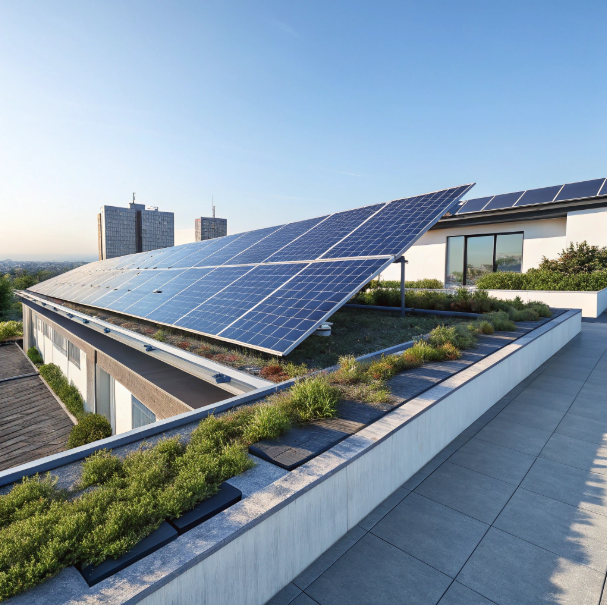How do solar panels convert sunlight into electricity? Learn the principles of photovoltaic power generation in one article!
by
How do solar panels convert sunlight into electricity? Learn the principles of photovoltaic power generation in one article!
Ever wondered how those shiny panels on rooftops turn sunlight into usable power? The magic lies in photovoltaic technology - and it's simpler than you think.
Solar panels convert sunlight into electricity through the photovoltaic effect: when photons from sunlight strike semiconductor materials (like silicon), they knock electrons loose, creating an electric current that's captured and converted into usable power.
This fundamental process powers millions of homes worldwide, but there's much more to understand about solar energy generation. Let's explore the fascinating details behind this clean energy technology.
The higher the temperature, the more electricity they generate? Wrong! Does solar panel efficiency actually decrease at high temperatures?
Think solar panels love scorching summer days? Think again - heat is actually their silent enemy.
Solar panel efficiency decreases at higher temperatures because heat causes electrons to move too chaotically, reducing voltage output. Most panels lose 0.3-0.5% efficiency per °C above 25°C - meaning they perform best in cool, sunny conditions.
Understanding the Temperature Coefficient
Every solar panel has a temperature coefficient rating (usually -0.3%/°C to -0.5%/°C) that quantifies this performance drop. Here's why it matters:
- Physics explanation: Semiconductor properties change with temperature
- Real-world impact: A 35°C sunny day can mean ~15% less output than lab conditions
- Cooling solutions: Some systems use water cooling or thermal management
| Temperature Effect | Impact on Performance |
|---|---|
| +10°C above STC* | 3-5% efficiency loss |
| +20°C above STC | 6-10% efficiency loss |
| *Standard Test Conditions (25°C) |
Mitigation Strategies
Innovative solutions are emerging to combat this thermal challenge:
- Bifacial panels that absorb light from both sides while dissipating heat
- Advanced materials with better temperature tolerance
- Proper installation allowing airflow beneath panels
How long do solar panels last? How much electricity will remain after 25 years?
Solar panels are the marathon runners of energy tech - their endurance will surprise you.
Most solar panels maintain 80-90% efficiency after 25 years, with lifespans often exceeding 30 years. Quality panels degrade only 0.5-1% annually thanks to durable materials and protective coatings that withstand decades of weather exposure.
The Science Behind Panel Longevity
The secret to solar longevity lies in:
- Encapsulation materials that prevent moisture ingress
- Tempered glass resisting hail and debris impact
- UV inhibitors in protective coatings
| Panel Component | Role in Longevity |
|---|---|
| Ethylene-vinyl acetate (EVA) | Primary encapsulation material |
| Tedlar backsheet | Moisture barrier |
| Anodized aluminum frame | Structural support |
Performance Over Time
Here's what to expect from aging panels:
- Year 1: 1-3% initial drop (light-induced degradation)
- Years 2-25: 0.5-1% annual degradation
- Beyond 25 years: Gradual performance decline, but still functional
Many manufacturers now offer 25-30 year performance warranties, guaranteeing at least 80% output at warranty's end.
Why do solar panels generate electricity even on cloudy days? Uncovering the secrets of low-light performance
Cloudy with a chance of power generation? Solar panels are more versatile than you imagined.
Solar panels generate electricity on cloudy days because they can utilize diffuse sunlight - photons that scatter through clouds. Modern panels produce 10-25% of their rated capacity under overcast conditions, thanks to improved low-light response in advanced cell designs.
The Physics of Diffuse Light Collection
Key factors enabling cloud-day performance:
- Spectral response: Newer panels capture wider light wavelengths
- Reflective surfaces: White roofs can boost diffuse light capture
- Cell architecture: Half-cut cells maintain voltage better in low light
Technology Advancements
Innovations enhancing low-light performance:
- PERC cells with rear-side reflectors
- N-type silicon with better spectral response
- Microinverters optimizing power point tracking
| Cloud Condition | Typical Output |
|---|---|
| Thin clouds | 50-80% of rated power |
| Heavy overcast | 10-25% of rated power |
| Dense storm clouds | 5-15% of rated power |
Conclusion
Solar panels efficiently convert sunlight to electricity through photovoltaic technology, maintain strong performance for decades, and work even in suboptimal conditions - making them a reliable renewable energy solution.
Popular Posts
You may also be interested in:




